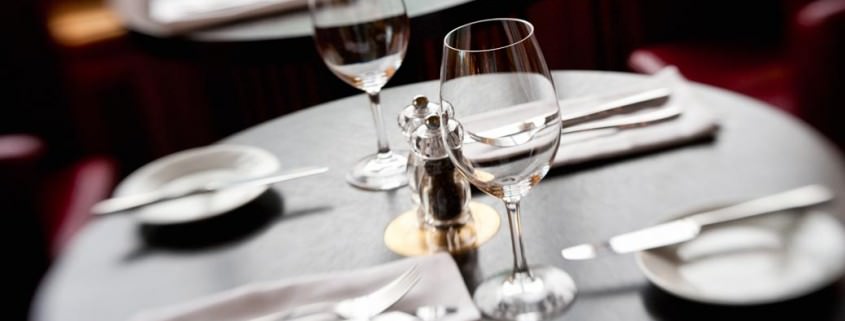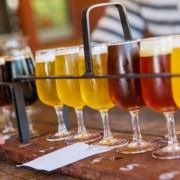Harsh Truths of Operating a Restaurant
Owning and running a restaurant is hard and generally under-appreciated, especially if you’re not Wolfgang Puck or Gordon Ramsey. Last month, Amanda Cohen, the owner of Dirt Candy in NYC, wrote an article in Eater called Harsh Truths: Failure Is Always on the Table When Opening a Restaurant. I think this post is a must read for restaurant owners and operators. She provides an honest assessment of her struggles with running her restaurant. As an acclaimed chef and industry veteran, everything was seemingly going well from the outside, but the financial success was not following.
While reading the article however, there were several things that struck me that I come across regularly when speaking with restaurant owners/operators. Now to qualify, these opinions are mine as an outside observer who has never run a restaurant. However, I am a business owner and many of the challenges she describes are the same that myself and almost any entrepreneur faces. On a weekly basis here at Uncorkd, I speak with dozens of restaurant owners and managers. I review hundreds of wine lists a year. I analyze data on beverage programs, consumer preferences and listen to feedback from our hospitality clients as to what is working and what isn’t.
The first piece I found most striking was (emphasis added is mine):
We were serving lots of people, almost more than the kitchen could handle, but our checks were low. People weren’t drinking enough booze. I was finally able to have a big, gorgeous wine list with a focus on the natural wines that I love, but they weren’t selling.
In my talks with restaurateurs every day, I’m often shocked by the lack of attention given to beverage programs. Alcoholic beverages have some of the highest margins in the business and can be a major driver of the bottom line. Yet, I talk with owners and managers who are seemingly content with 15% alcohol sales (of total revenue) when they could double that and be doing 30%. Sometimes they rave about how great their beverage program is, how they spend so much time picking out their cocktails and wine list.
Yet often what is forgotten is it doesn’t matter how much you love your beverage program, but how much your customer loves it and more importantly if they vote with their wallet and actually purchase. At least, if you are running the business to maximize profits. And maximizing profits are not mutually exclusive with delivering a superior customer experience or having a great wine list.
Keep in mind, the feedback you get from customers is anecdotal, biased, and won’t provide an honest assessment. Customers provide feedback when they love something or when they are disappointed. Rarely will a customer who doesn’t like your beverage selection tell you, they just won’t order a drink. So if you receive comments from customers that they really like your cocktail list, your beer selection or wine menu, that’s great but may not be representative of all your customers. So check the data, look at your sales figures, see what your customers actually order.
I truly believe that dinner is a cocktail, an appetizer, an entree, and a dessert, with at least a bottle of wine, and probably coffee at the end. That’s the way I eat and I thought that’s the way everyone else wanted to eat, too. I wanted to offer straight-up old school cocktails prepared with no frills. When I go to a restaurant I don’t want a Yum Yum Passion Soda made with house bitters. I want a gin and tonic.
You can see Amanda coming to terms with how her sales were not reflected in her vision and personal preferences. If you create and manage your restaurant to your own tastes, you’re targeting an audience of one. While she may enjoy classic cocktails, there is no denying (with actual sales data) that craft cocktails are seeing a big surge.
My dreams had to die.
And so Amanda starts taking drastic measures to keep her business afloat. She made thousands of tweaks to service, staff, and the menus. This is the biggest challenge of running a business and especially a restaurant. You open a restaurant because you are passionate about it. You finally get to put your heart and soul into every aspect, the food, the drinks, the ambiance.
Reconciling passion and vision with customer needs is what truly separates successful restaurants. You don’t need to give up on your plans, but frame them in a way that connects emotionally with your customers. If you love natural wines, include them on your list, but not to the exclusion of everything else. And tell a story around your selections, educate your guests, let them love the soul of your restaurant as much as you do. Bobo, a restaurant in NYC’s West Village (and Uncorkd customer), has a wonderful curated wine list focused on artisanal family wineries that have sustainable practices and organic or biodynamic wine. Yet, they do a fantastic job with their list and educating their customers. While their selections may be non-traditional, they have something for every customer.
I had to throw everything in the garbage. The same thing happened six months in at the original Dirt Candy, when I revamped the menu and changed how I ran the kitchen. It was the moment that I found my feet there, but I thought that with seven years of experience since then I could skip that step. Quickbooks was telling me otherwise.
Times change, tastes change, new trends come and go. Amanda’s article wasn’t just a call to chefs opening up new restaurants, but clearly also has meaning for industry veterans. Just because something has always worked, doesn’t mean it will continue to work in the future. As one of my favorite actors, Kevin Spacey, has said, “We’re all victims of our own hubris at times.”
So… stay on your toes. Always look for ways to improve. Analyze your sales data to understand what your customers are purchasing in addition to what they are telling you. Look at what’s happening outside of your restaurant. Try new things. Don’t say you won’t do something because you’ve always done it a certain way. Take advice, even if you’ve been in the business for 30 years, there’s always someone who knows more than you or has a unique perspective. And focus on your customers, all of them.
- Uncorkd Adds New Vendor Purchasing, Tracking and Reporting Functionality - February 13, 2018
- Uncorkd Adds New Inventory Management Functionality with POS Integration - July 24, 2017
- How Many Red or White Wines Should You Have on Your List - May 3, 2016








